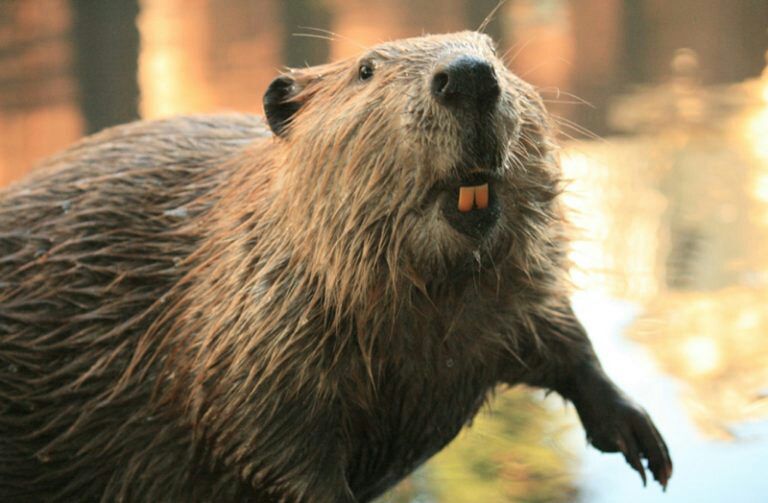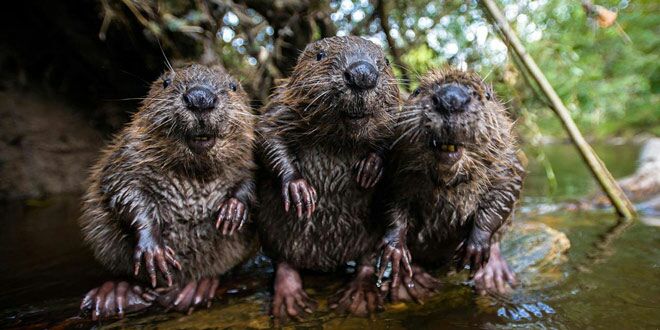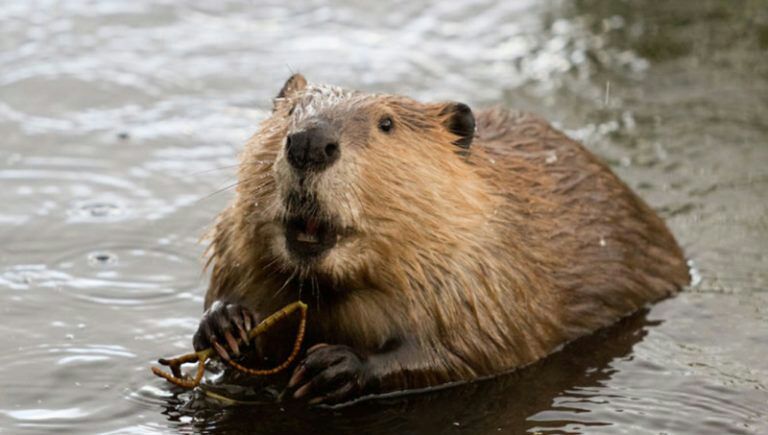Beavers
Canada had once considered putting a beaver on their national flag.
I'll include a link to an image of it in the comment section below.
Stretching up to 102 cm [40 in] in length and weighing as much as 27 kg [60 lbs], the beaver (Castor canadensis) is the largest rodent in North America.
There are two species of beaver, both a North American and a European species. European beavers cannot breed with North American beavers, and one of the results, after more than 27 attempts, was a single stillborn kit.
Historically, they were eaten as a delicacy by many Native American tribes, a custom adopted by colonial Americans and early frontier residents.
Their teeth are supposedly coated with iron, which would explain why they are orange in color.

Beaver-engineered dams and diversion ponds serve to prevent floods and loss of surface soils during spring thaws and summer rainstorms. Beavers are second only to humans in their ability to manipulate their environment – the largest dam in existence is located in Wood Buffalo National Park, Alberta, Canada. It stretches for about 850 m [half a mile], and is visible from space.
They possess a set of transparent eyelids which enable them to see underwater.
Beavers have been known to share their lodges with families of muskrat.
A beaver will fell a particular tree for a particular reason; a larger mature tree will be felled to form the basis of a dam. A young, second growth tree will be felled for food. Beavers will also fell broad-leaved trees to encourage regrowth (aka food) more within their reach.
Beavers use their broad, stiff tails like rudders to steer under water, and for balance while sitting on land. They also use their tails to slap the water as a warning of danger, or a warning to keep away.
Beavers live on their own at age two, and have an average life span of 12 years, though they can live up to 24 years.

Due to the aquatic habitat and behavior of the beaver, the Catholic Church supposedly officially categorized it as a type of fish, permitting it to be eaten on Good Friday and throughout Lent.
In 1948 Idaho, beavers were airdropped into wild forest areas using army surplus boxes and parachutes when they had outgrown their other habitats.
They make several sounds, such as mumbles, whines, snorts, and hisses.
Since the sixteenth century, the beaver has been the target of Native Americans and European immigrants alike for its luxurious pelt. Also, its underwool—prized for its suppleness and water resistance—has been commercially valuable in the felting industry for the making of hats.
In 1638, King Charles II decreed that all fur hats manufactured in England be made of North American beaver, fueling a series of beaver wars between the Iroquois and their English allies and the French and their Native American allies.
A man once single-handedly kept an Iowa county's beaver population in check.
With their strong jaws and teeth, beavers can chew through a 15 cm [6 in] tree in 15 minutes. A single beaver can chew down hundreds of trees each year.

By 1900, beaver numbers had declined and the animal had almost been exterminated in many parts of North America as a result of overhunting by Native Americans and Europeans alike. Ironically, more beaver have been trapped annually since the 1950s than at any other time in North American history, with nearly 670,000 pelts recorded in 1980. Beaver trapping continues in the early twenty-first century in Canada's far north and is a highly regulated source of subsistence income in Alaska and parts of the lower forty-eight states.
The lips of a beaver can close behind its front teeth, which helps it in carrying branches around without drowning.
Bạn đang đọc truyện trên: AzTruyen.Top